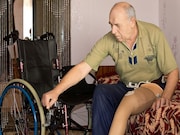Risk higher regardless of microvascular disease location or other blood vessel conditions
FRIDAY, July 12, 2019 (HealthDay News) — Microvascular disease (MVD) increases the risk for amputation alone and in combination with peripheral artery disease (PAD), according to a study published online July 8 in Circulation.
Joshua Beckman, M.D., from the Vanderbilt University Medical Center in Nashville, Tennessee, and colleagues used data from the Veterans Aging Cohort Study (April 1, 2003, through Dec. 31, 2014) to assess whether MVD diagnosed in any location increases the risk for amputation alone and with PAD.
The researchers found a total of 1,185 amputations among 125,674 veterans without evidence of prior amputation at baseline. The rate of incident amputation was 1.16 per 1,000 person-years during a median of 9.3 years of follow-up. Compared with those without PAD or MVD, having MVD alone was associated with a 3.7-fold increased risk for amputation, while PAD increased the risk for amputation by 13.9-fold. The combination of PAD and MVD was associated with a 22.7-fold increased risk for amputation.
“Clinicians should routinely solicit clinical complaints and physical signs of lower extremity injury or lesion to ensure the addition of therapies to minimize amputation in patients with MVD and PAD, and, particularly, the combination of both,” the authors write.
One researcher disclosed financial ties to the pharmaceutical industry.
Copyright © 2019 HealthDay. All rights reserved.








